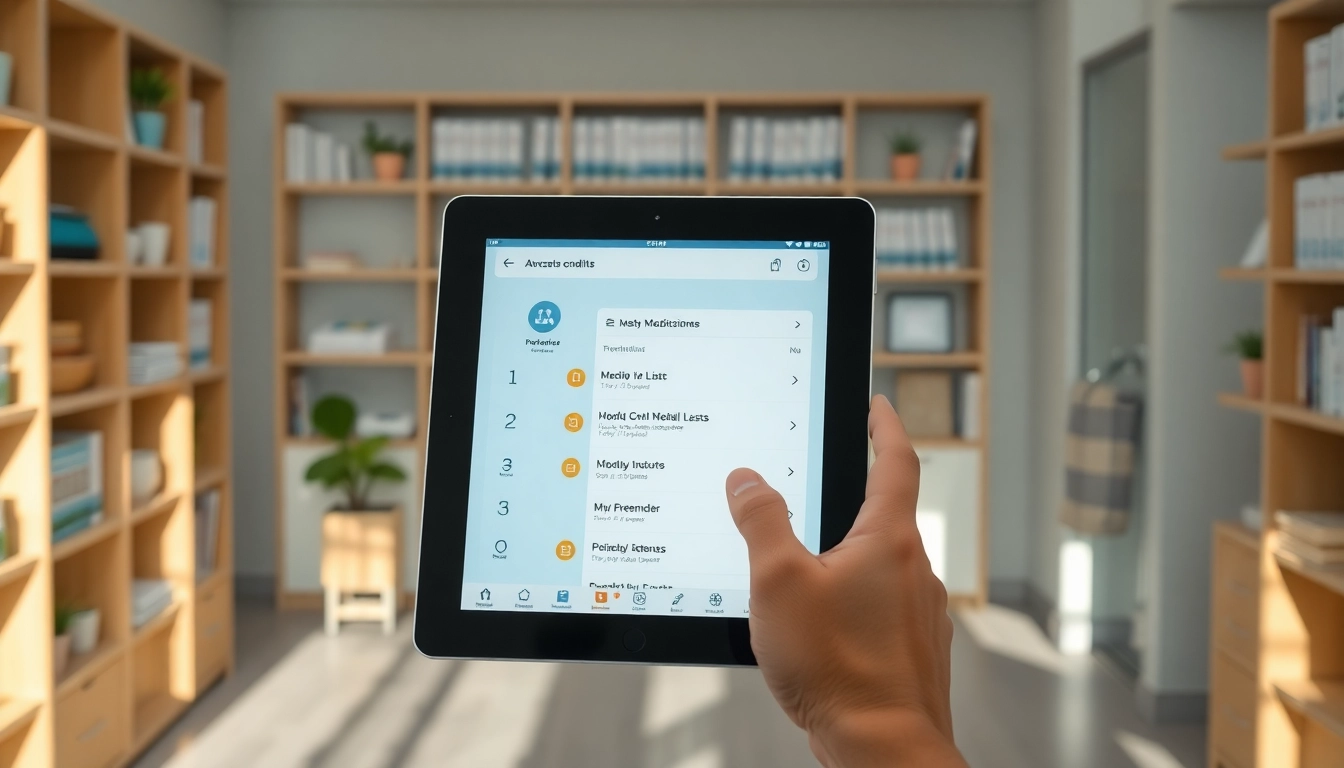Understanding E-Prescribing: A Comprehensive Guide
E-prescribing has revolutionized how healthcare providers manage prescriptions, enabling a seamless process for doctors, pharmacies, and patients. As medical practices increasingly adopt technology, the shift towards digital solutions underscores the importance of choosing the best eprescription apps. In this guide, we will explore what e-prescribing is, its benefits, and the key features that differentiate effective e-prescribing solutions.
What is E-Prescribing?
E-prescribing, or electronic prescribing, is the digital generation and transmission of medication prescriptions from a healthcare provider to a pharmacy. This process replaces handwritten prescriptions and enhances accuracy, efficiency, and convenience. In an e-prescribing system, providers can electronically send prescriptions to pharmacies while also accessing patient medication histories, ensuring safer medication management and reducing the risk of errors.
Benefits of Using Best Eprescription Apps
The advantages of implementing e-prescribing systems are numerous, making them an essential component of modern healthcare:
- Improved Accuracy: Digital prescriptions reduce errors associated with illegible handwriting, incorrect dosage, or misunderstandings between patients and pharmacists.
- Enhanced Efficiency: E-prescribing systems streamline the prescription process and minimize patient waiting time, which can lead to quicker access to necessary medications.
- Better Patient Safety: By providing access to comprehensive medication histories, these systems help identify potential drug interactions or allergies, improving overall patient safety.
- Cost-Effective: E-prescribing can contribute to lowering healthcare costs by reducing paperwork, improving workflow, and minimizing patient visits due to prescription-related issues.
- Convenience for Patients: Patients can have their prescriptions sent directly to their preferred pharmacies, allowing for a smoother experience and enhanced adherence to medications.
Key Features to Look for in E-Prescribing Solutions
Choosing the right e-prescribing app depends on several key features that enhance usability and improve patient care:
- User-Friendly Interface: An intuitive interface ensures that healthcare professionals can navigate the software easily, saving time and reducing user error.
- Integration with EHR Systems: The ability to integrate with existing Electronic Health Record (EHR) systems allows seamless data sharing and improved workflow.
- Pharmacy Network Access: Access to a comprehensive pharmacy network facilitates faster prescription processing and enhances patient options.
- Real-Time Medication History: This feature allows providers to check a patient’s medication history, reducing the chances of adverse drug interactions.
- Compliance and Security: Ensuring that the app meets legal requirements for data protection and patient privacy, adhering to regulations such as HIPAA, is vital.
The Best Eprescription Apps Compared
As the healthcare landscape evolves, various e-prescribing applications have emerged, each offering unique features tailored toward enhancing the prescribing process. Below we detail some of the leading e-prescribing apps available.
Top Features of Leading E-Prescribing Apps
Understanding the selection of features that differentiate the top e-prescribing apps can help in making an informed choice:
- Customization: The ability to customize templates according to the specific needs of a practice can streamline workflow.
- Drug Interaction Alerts: Many applications provide alerts about potential interactions when a new prescription is entered, safeguarding patient health.
- Prescription Tracking: Leading apps include tracking tools that allow practitioners to monitor the status of prescriptions and ensure they are filled promptly.
- Patient Communication Tools: Features that enhance communication with patients regarding their prescriptions, including reminders to refill and notifications about medication changes, can improve adherence.
User Experience and Accessibility
The user experience should prioritize a smooth interaction, especially for busy healthcare professionals. Applications that offer mobile functionality and support varying devices can extend accessibility and convenience. For example, some apps may offer mobile versions that allow prescriptions to be sent on the go, enhancing a provider’s workflow outside the traditional office setting.
Pricing Models and Value for Money
When considering an e-prescribing solution, it’s crucial to evaluate the pricing models available. Some may offer subscription-based services while others use a pay-per-use model. Understanding what fits best within the budget of a practice while considering the features offered can lead to getting optimal value for the investment.
How to Select the Right E-Prescribing App
With numerous options on the market, selecting the right e-prescribing application requires a strategic approach to ensure it meets the needs of a healthcare practice.
Assessing Your Practice’s Needs
Begin by evaluating the specific requirements of the practice. Consider factors such as the size of the practice, the volume of prescriptions handled, and any unique clinical needs. A thorough needs assessment can guide the selection of an application that enhances workflow and improves patient care.
Evaluating Compatibility with Existing Systems
It is essential to assess how well an e-prescribing solution integrates with existing healthcare technologies, such as EHRs and practice management systems. Effective integration helps maintain streamlined operations, ensuring that all systems work seamlessly without causing disruptions.
Reading User Reviews and Testimonials
Researching user experiences and testimonials can provide valuable insights into an application’s performance and reliability. Engaging with existing users through forums or social media groups can shed light on practical challenges and satisfactions, leading to a more informed decision.
Best Practices for Implementing E-Prescribing
Successfully implementing an e-prescribing solution involves planning, training, and compliance checks that enhance utilization and efficiency.
Training Your Staff on New Systems
The effectiveness of e-prescribing software is heavily reliant on how well staff members are trained. Establishing comprehensive training programs that cover all aspects of the new system can optimize usage and reduce potential user errors.
Ensuring Patient Privacy and Data Security
Compliance with privacy regulations such as HIPAA is non-negotiable. Instituting robust data security measures protects patient information and helps to maintain trust. Regular audits and updates to the system’s security protocols can further ensure safety.
Integrating E-Prescribing with Telehealth Services
The integration of e-prescribing with telehealth services supports a holistic approach to patient care. Allowing prescriptions to be managed seamlessly within telehealth interactions enhances the efficiency and effectiveness of remote consultations, leading to enhanced patient satisfaction.
Measuring Success: Optimizing Your E-Prescribing Experience
To ensure the successful implementation and ongoing efficacy of e-prescribing solutions, practices should regularly measure success through various performance metrics.
Key Performance Indicators to Track
Identifying and monitoring key performance indicators (KPIs) such as prescription fill rates, user engagement levels, and the number of interaction alerts can help ascertain the efficiency of the e-prescribing system. Establishing baseline measurements allows for better assessment over time.
Gathering Feedback from Patients and Staff
Collecting feedback is crucial for improvement. Regular surveys directed towards both staff and patients can help identify any areas that need enhancement, ensuring that the solution aligns well with user needs and expectations.
Continuous Improvement Strategies
Establishing a framework for ongoing evaluations and updates to the e-prescribing system can foster an environment of continuous improvement. Keeping abreast of technological advances and adjusting processes according to user feedback will create a culture of excellence and responsiveness within the practice.




